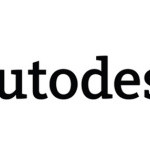- Sektör: Software
- Number of terms: 4366
- Number of blossaries: 1
- Company Profile:
1. In modeling, the process of creating a 3D surface or shape by sweeping a cross-section or profile along a curve.
2. In polygonal modeling, the process of extending a vertex, edge, or face, thereby creating additional faces off of surrounding faces.
Industry:Software
1. In soft deformation, the point at which a deformation falls off to zero. Defined in terms of a falloff radius.
2. In Fluid Effects, a region that gives shape to fluid substances, used for example to keep a cloud within a certain shape or to define the rough shape of an explosion. Specify a falloff region by painting it or using a curve in a container. The edge of the falloff area is soft (because there are no collisions), and there is no buildup of density in the area.
Industry:Software
A configuration variable that controls some aspect of Maya. Many of the variables are included in the Maya program and are set automatically when you start Maya. To configure Maya further, you can set additional environment variables.
Industry:Software
A method of specifying the angle of rotation about one of the standard axes: X, Y or Z.
Industry:Software
A path of polygon edges connected in sequence by their shared vertices. For example, if you select one horizontal edge on a sphere, an edge loop selection will attempt to select all of the horizontal edges along that same line of latitude on the sphere.
Industry:Software
A path of polygon edges that are connected in sequence by their shared faces. For example, if you select one vertical edge on a sphere, a ring selection selects all of the vertical edges along the same line of latitude on the sphere by selecting each suasive edge that is adjacent to the selected edge.
Industry:Software
A rendering option that yields extremely realistic shading effects. It can be used in conjunction with Global Illumination to create optimal lighting and shading effects. With Final Gather, rays are first cast from the light (rather than from the camera, as with simple ray tracing). When a ray strikes an object, a series of secondary rays are diverted at random angles to calculate the light energy contribution from surrounding objects, which is then evaluated during the ray tracing process to add the effect of the bounced light. This basically turns every object into a light source so each object in a scene influences the color of its surroundings as in the real world.
Industry:Software
A rendering utility that lets you examine batch-rendered images at a speed that approximates video or film. In other software packages, equivalents are mplay, RAM player, showpic, imgshow.
Industry:Software
A solver using Autodesk® HumanIK® technology from MotionBuilder that makes rigging and posing characters faster and easier, and enables the natural articulation of biped and quadruped models.
Industry:Software
